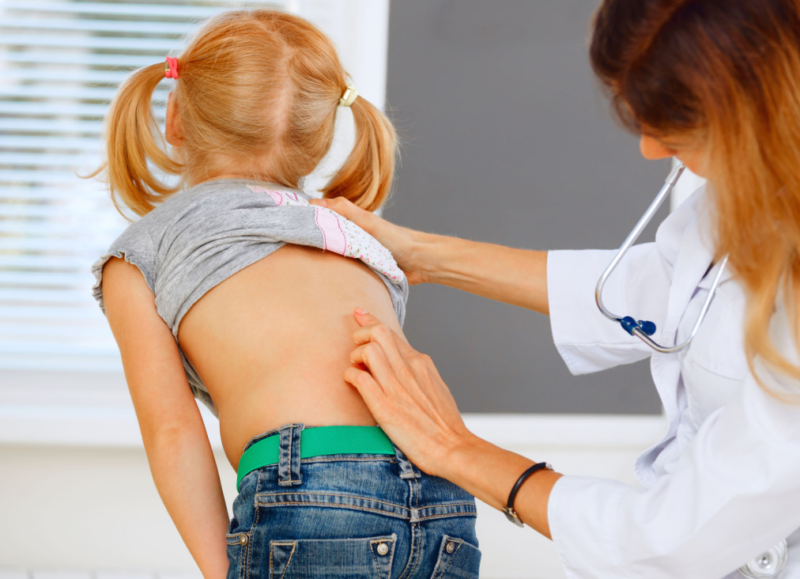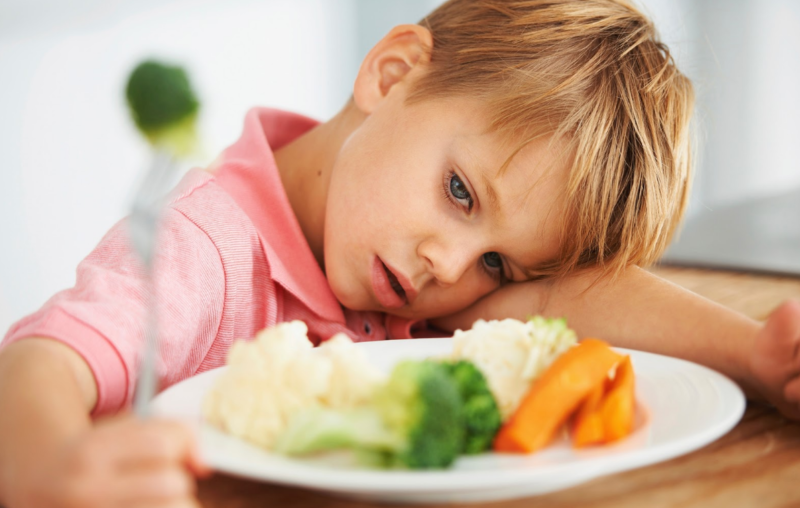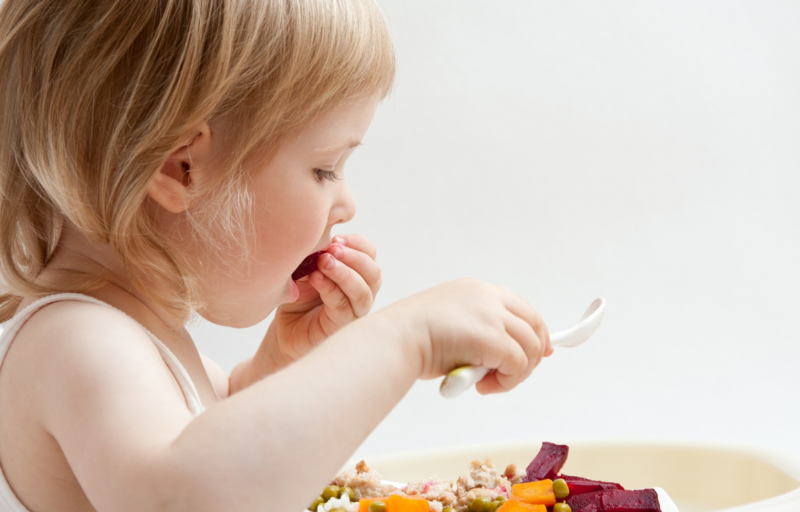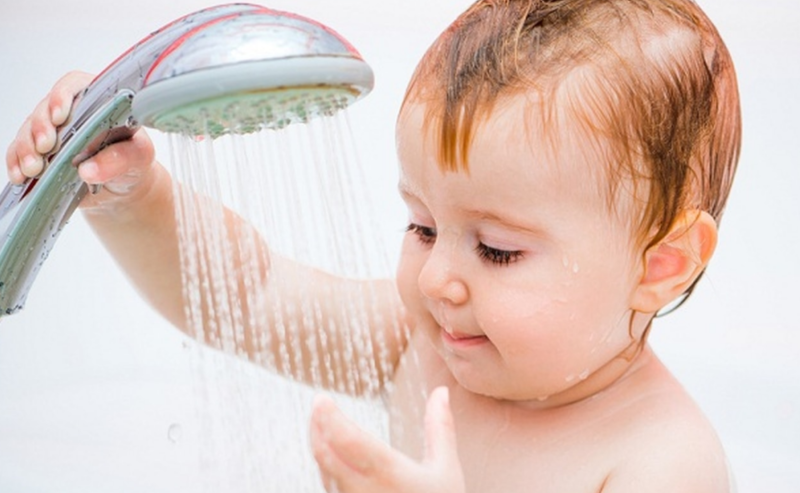Pyelonephritis in children is second only to respiratory infections and SARS in prevalence. Without proper treatment, the pathology becomes chronic, leading to irreversible consequences.
Material Content:
Causes of pyelonephritis in children
Pyelonephritis occurs with bacterial or viral damage to the kidneys. Inflammation covers the parenchyma, pelvis, calyx, tubule of the organ. The causative agents are more often Escherichia coli, Klebsiella, Proteus, Staphylococcus, less commonly Epstein-Barr, Coxsackie viruses.
Pathogens are distributed in three ways:
- Hematogenous. Pathogens move with blood flow from the focus of inflammation to the kidneys. Pyelonephritis occurs as a complication of diseases of the ear, throat, nose, lungs, bronchi, gastrointestinal tract. Newborn babies become infected in utero from the mother during pregnancy.
- Lymphogenic. The urinary organs and intestines are united by a common system of lymph circulation. Intestinal dysfunction leads to a violation of the normal circulation of lymph. With its stagnation, bacteria multiply rapidly, then penetrate the kidneys.
- Ascending. In violation of the normal microflora of the external genital organs, urethra, vagina, bladder, pathogens rise to the kidneys from the lower urinary tract. In girls, the urethra is wider and shorter, infection occurs in this way 3 times more often than in boys.
A healthy organism with normal immunity copes with pathogenic microbes and prevents them from spreading.
The development of pyelonephritis is facilitated by internal and external factors:
- violation of urine excretion due to hereditary pathologies;
- a change in its composition, the appearance of microorganisms without signs of inflammation;
- foci of infection of any localization;
- intestinal diseases: colitis, constipation, dysbiosis;
- decreased local and general immunity;
- genital inflammation: vulvitis, vaginitis, urethritis;
- untreated cystitis;
- inadequate hygiene;
- a rare change in diapers in an infant;
- hypothermia or overheating;
- early onset of sexual activity.
In children under one year of age, the risk of infection increases 2 times with early weaning.
Types of disease
Doctors distinguish the following types of pyelonephritis:
- primary and secondary;
- obstructive and non-obstructive;
- acute and chronic.
The primary form of the disease develops in healthy children with a normal structure of the urinary organs. Secondary occurs against the background of congenital pathologies of the structure of the kidneys, urinary tract.
Obstructive pyelonephritis develops when urination is impaired, which contributes to the rapid reproduction of pathogenic bacteria. Unobstructive - as a result of a decrease in immunity, metabolic disorders.
Acute pyelonephritis in children occurs with pronounced symptoms, signs of intoxication, but after a month the child completely recovers. The chronic form is diagnosed when, after a temporary improvement, at least 2 exacerbations occur within six months. The disease is difficult to treat, sometimes accompanies a person until old age.
Symptoms and signs
Symptoms of pyelonephritis in children depend on age. In infants, the temperature rises sharply above 39 with no signs of respiratory disease, does not go astray with the usual medication for two days. The baby cries for no reason, sleeps anxiously, refuses to eat. When urinating, worried, the face turns red. Sometimes the onset of the disease is accompanied by diarrhea, so pyelonephritis is confused with intestinal infection.
In children 1–5 years old, with an increase in temperature, vague pains appear: in the center or lower abdomen from the affected organ. At the same time, nausea occurs, sometimes vomiting, discomfort during urination.
After 5-6 years, against the background of fever, lethargy, drowsiness, obvious symptoms from the urinary organs arise:
- The child complains of aching constant pain in the lower back, above the pubis. When moving, it intensifies, in peace and warmth it subsides.
- Urination is impaired: it becomes more frequent or, conversely, it is difficult, painful sensations, burning sensation, and night incontinence occur.
- Urine darkens, becomes cloudy, foam appears, an unpleasant smell. A reddish hue indicates the presence of blood.
Chronic pyelonephritis during the period of remission is asymptomatic. However, children get tired faster, go to the toilet more often, academic performance decreases. Preschoolers are lagging behind in physical development. During relapses, the symptoms of the acute form of the disease return.
Diagnostic measures
If kidney inflammation is suspected, the pediatrician sends a pediatric urologist or nephrologist for a consultation.
The doctor prescribes laboratory tests:
- A urinalysis confirms infection if the number of leukocytes and protein is higher than normal.
- Bacterial culture determines the composition of the microflora, the type of pathogen, its sensitivity to antibiotic groups.
- The Zimnitsky study is designed to test kidney function by the amount of urine collected per day.
- A clinical blood test for inflammation shows a deviation from the norm of the leukocyte formula, sometimes a reduced level of hemoglobin, red blood cells.
- A biochemical blood test reveals kidney failure with an increase in creatinine.
- Ultrasound determines anomalies in the anatomical structure of the urinary tract and kidneys.
Sometimes an urography is sometimes prescribed - an x-ray with the introduction of a contrast solution, CT or MRI.
Treatment of inflammatory kidney disease
Infants and older children with a severe course of pathology are sent to the hospital. With a mild form, the doctor allows you to stay at home, but recommends bed rest for the first 5 days.
Treatment of pyelonephritis in children includes a diet and drug therapy, in which the following drugs are used:
- Antibacterial drugs. First, broad-spectrum antibiotics are prescribed. When the results of bacterial sowing are clarified, they switch to a highly targeted remedy. The medicine is taken from the first hours after diagnosis within a month. Every 7-10 days they are replaced with an analogue with another active substance. Most antibiotics are contraindicated in children under 12 years old, so only a doctor prescribes specific medications.
- Uroseptics. Medications are concentrated in the urinary organs, inhibit growth and destroy pathogenic microbes. Plant uroseptics are allowed in childhood, give few side effects,
- Symptomatic medicines. If necessary, use antipyretic, painkillers, antispasmodics.
After recovery, herbal medicine is prescribed, the pediatrician observes the child for 5 years, checks the results of laboratory tests and ultrasound.
Diet and proper nutrition
A strict diet for pyelonephritis is followed by the first 5-7 days:
- The diet consists only of vegetable soups and stews, milk porridges, fresh fruits.
- Protein products are excluded to reduce the burden on the kidneys.
- Salt is limited to 3 g per day, food is not seasoned during cooking, but on a plate.
- Sausages, smoked meats, marinades, canned food are completely excluded. Do not give fatty, spicy, fried foods, pickles.
- They feed 5 times a day in small portions the size of a children's fist.
- Drink plenty of water. In addition to water, freshly squeezed juices, fruit drinks, compote, kissel, rosehip broth, tea are allowed. Drinks from packages, carbonated sweet water are completely excluded.
After improvement, they adhere to the same rules, but add lean meat, eggs, cottage cheese, fish, sour-milk products to the diet. They switch to the usual food when they do not notice symptoms of inflammation during the year.
Possible complications
According to statistics, 85% of children recover without consequences if treatment begins on the first day after the detection of the disease.
With a delay in therapy, the following complications develop:
- acute or chronic renal failure;
- slowing down the blood supply to organ tissues;
- the formation of pustules;
- violation of normal urination;
- wrinkling of the kidney;
- polycystic;
- the transition of inflammation to an adjacent kidney, in the lower parts of the urinary system;
- the formation of stones in the cups and pelvis.
With the development of complications, surgical intervention is sometimes required.
Prevention
To reduce the likelihood of kidney infection, the following rules are recommended:
- Strengthen defenses with hardening, balanced nutrition, regular walks.
- In time to treat infectious foci: acute respiratory infections, pustules on the skin, diseases of the ENT organs, caries.
- Do not send a cold child to kindergarten or school, but put to bed.
- Follow drinking regimen: fluid flushes pathogens from the urinary system.
- To include foods with vitamin C in the diet, ascorbic acid acidifies urine, which makes it difficult for bacteria to multiply.
- Do not supercool or overheat.
- To instill hygiene skills: wash your hands more often, take a shower or bath every evening, and learn how to use toilet paper. In infants, regularly change diapers.
- Monitor bladder emptying.
- Twice a year drive to preventive medical examinations, take tests.
Pyelonephritis is treated without consequences with early diagnosis and proper therapy, in advanced cases it takes a chronic form and ends with serious complications.


















